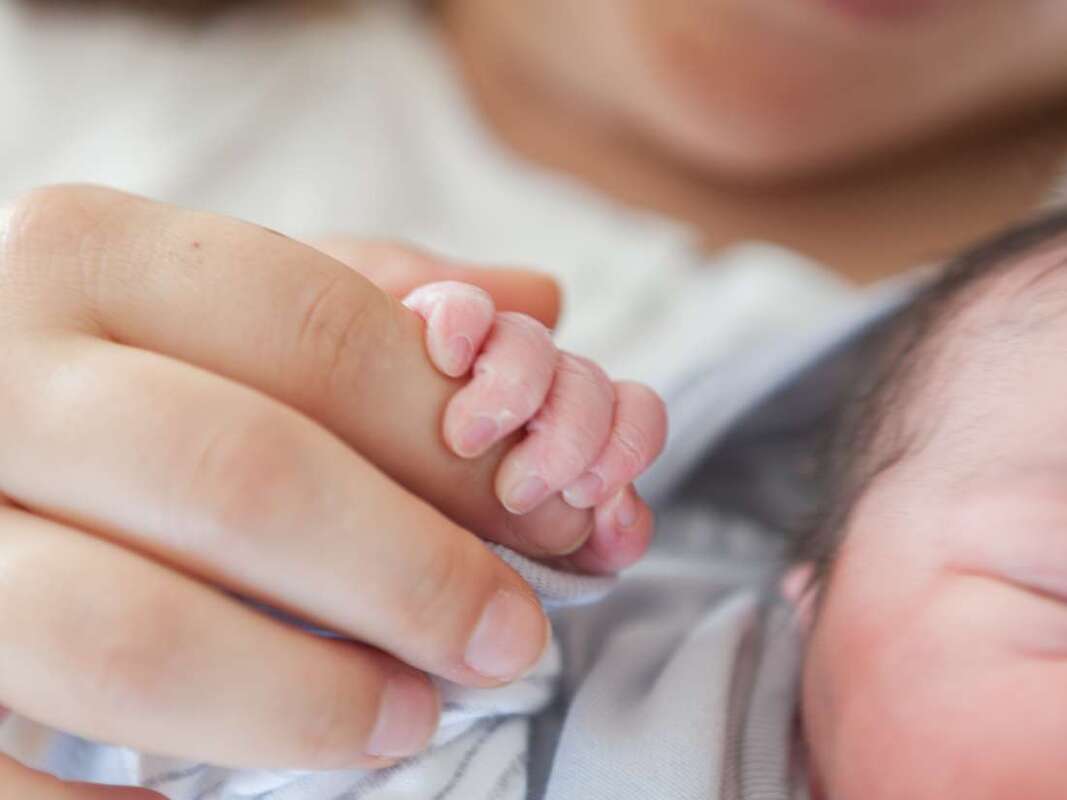|
With the overpowering number of babies delivered through C-section, normal delivery has become a rarity these days. Blame it on the pregnant woman’s health, lifestyle routines or changes in environment the fact remains that mode of delivery has seen a tremendous change in the recent decades. C-section was a complicated procedure which required prolonged hospital stay, higher expenditure and greater pain for the mother but now even mothers who have experienced C-section deliveries are discharged within a couple of days and the pain experienced has also diminished. In fact, there are more women preferring a C-section delivery fearing unbearable pain and on the other hand, there are a handful of them who would love to experience delivery pain as it makes them feel complete and establishes the fact that they have entered motherhood. One of my friends who struggled during her first delivery (but finally gave birth via normal delivery) opted for a natural child birth at a birthing centre in Kochi. The procedure followed there is entirely different and only after she experienced this she became aware and also created awareness among others too that the normal deliveries that happen in hospitals are not 100% natural but have glimpses of antibiotics and drips dispensed to invoke pain on the mother-to-be. I see many women around me opting for natural birthing methods these days in order to deliver a healthy baby that’s naturally healthy without any antibiotics or medications (these are avoided as much as possible) dispensed to the mother during pregnancy. While we can argue about what’s there to fuss so much about different birthing options it also boils down to the very fact that the mode of infant delivery can affect the composition of the baby’s gut microbiota that in turn plays a pivotal role in the well-being of the infant as an adult later in life.
Seeding at Birth The gut microbiome is integral to an infant’s growth, development, nutrition and immunization and we have numerous researches linking the gut bacteria to human health (gastrointestinal diseases and more). The evolution of the gut microbiome composition starts right from birth and to be precise, exactly from when the baby is delivered with the mode of delivery having a strong influence on the colonization and composition of the intestinal microbiota. Its been proved that newborn infants acquire their mother’s microbiome from birth canal during the delivery process and its these bacteria that occupy the infant’s gut. Comparing this composition with that of infants delivered through C-section offers huge scope for understanding the dramatic changes that result as a difference in the delivery method. The type of pacifiers and feeding modes also strongly affect the infant’s oral microbiota composition which makes it evident that the timing of sample collection is important and might even change the course of the study result. The study below collected samples of the oral microbiota of infants immediately after birth and compared the difference in colonization patterns that happened due to different modes of delivery. Difference in Oral Microbiota Composition in Babies Born Via Different Modes of Delivery Initially the study consisted of 100 participants (80 vaginal and 20 C-section births) but 2 C-section and 6 normal delivery babies did not meet the inclusion criteria which left the study with 92 participants. All the 92 participants were grouped into vaginal or C-section delivery and showed no difference in age, gestation week, pregnancy weight gain, gestational diabetes, infant sex or infant birthweight. 18 C-section deliveries were teamed into one group and 27 vaginal deliveries were also clustered with the C-section group as they had spent longer time delivering the baby (almost 2532 minutes compared to 581 minutes). 8 cases of emergent vaginal delivery were clustered into the vaginal group. The researchers identified 6 major phyla of oral bacteria that included Actinobacteria, Bacteroidetes, Firmicutes, Proteobacteria, Synergistetes and Tenericutes. Firmicutes, Bacteroidetes and Actinobacteria generally dominate the vaginal delivered babies while Bacteroidetes, Proteobacteria and Firmicutes dominated the C-section delivered babies. Comparison between the two groups at the phylum level showed that there was significantly more Actinobacteria, Firmicutes and less Bacteroidetes and Proteobacteria in the vaginal delivery group compared to the C-section group. At the genus level, Lactobacillus, Prevotella, Bifidobacterium, Corynebacterium, Bacteroides, Gardnerella, and Ureaplasma dominated the vagianlly-delivered group while Petrimonas, Bacteroides, Desulfovibrio, Pseudomonas, Staphylococcus, Tepidmicrobium, VadinCA02 and Bifidobacterium dominated the C-section delivered group. Lactobacillus and Petrimonas are the two genera vastly different across the two groups. There are various studies that show that infants born via C-section are prone to developing allergic rhinitis, asthma, eczema, obesity and diabetes compared to those born vaginally. Another study showed that bacteria in newborn were similar to mother’s vaginal bacteria while the bacterial content in C-section babies resembled that of the mother’s skin. The study here collected oral samples from participants immediately after birth and the differences between groups in oral microflora can be attributed to the vaginal contact. The research team found that the oral cavity of the newborn delivered via caesarean contained different bacteria mostly dominated by Bifidobacteria that’s not airborne suggesting an important point that bacteria acquisition occurs within the uterus. Lactobacilli dominates vaginally delivered infants and, in this study, too 30 cases from natural labour contained more of this bacteria (which protects intestinal mucosa). The vaginal delivery group also contained more of Bifidobacteria (maintain immune system & reduce allergies) and Akkermansia (protects against metabolic conditions) both of which are integral for better health. Providencia or Gardnerella were also found in 15 naturally delivered infants. The 27 vaginally delivered infants who were included alongside C-section delivery showed that the mothers spent longer in-patient time in the delivery room and underwent more pelvic examination which prevented these infants from acquiring their mother’s vaginal microflora. Those who received regular pelvic exams were also subjected to large amounts of povidone iodine which means that the patient’s vagina contained more iodine which could have affected the transfer of mother’s microbiota to the baby. Re-establishing Gut Microbiome Composition with Breast Feeding We have studies pertaining to the fact that the absence of a well-established gut microbiota is linked to metabolic and allergic diseases such as diarrhea and malnutrition in Bangladeshi children, overweight/obesity in 7-year-old kids, infant asthma during the first 100 days of life and paediatric Crohn’s disease. While there are studies that bacteria acquisition begins in utero evidences are not strong enough and we have a greater number of studies showing that bacterial colonization begins at birth dominated by various prenatal and postnatal factors the most dominant of which include delivery mode, environmental factors, feeding pattern and antibiotic usage. Vaginal birth delivery helps in the passage of healthy bacteria to the born infant while c-section delivery is associated with delayed maturation of gut microbiota in early life which increases the risk of childhood obesity. Likewise, breastfeeding has always been associated with a lower risk of allergic diseases and obesity risk compared to formula feeding as it paves way for more Bifidobacterium and Lactobacillus compared to formula-fed infants. The presence of these two results in a more acidic environment in the GI tract that defends against common pathogens. An increased exposure to antibiotics (prenatal and postnatal) increases the risk of diabetes and obesity as there is a disruption to the microbiota and loss of beneficial bacteria. A Chinese study combined the effect of delivery mode, antibiotic exposure and feeding pattern on the gut microbiota composition of infants and the beneficial effect of breastfeeding on infants born through c-section delivery. The study was done on 120 Chinese infants at 6 weeks postpartum. Information about their mode of delivery (laboured or elective), cause for caesarean delivery, breastfeeding or formula feeding was obtained. Faecal samples of infants were collected and the infants were divided into two groups: antibiotic (A group, N=26) and non-antibiotic (NA group, N=94) based on postnatal antibiotic exposure. In the NA group, the mode of delivery and feeding patterns were analysed to discard any influence of antibiotics and the infants were once again divided into vaginally delivered (V group, N=60) and cesarean delivered (C group, N=34), and exclusive breastfeeding (B group, N=67) and mixed feeding (M group, N=27) group. The researchers identified 3,367, 929 bacterial sequences in 120 infant fecal samples in which 8 phyla and 147 genera were observed. Firmicutes (44.9%) was the most abundant phylum, followed by Proteobacteria (22.7%), Actinobacteria (18.7%), and Bacteroidetes (13.2%). The top 10 abundant genera were Bifidobacterium (17.3%), Clostridium sensu stricto 1 (12.8%), Klebsiella (10.7%), Bacteroides (8.7%), Streptococcus (8.0%), Escherichia-Shigella (6.2%), Veillonella (4.0%), Erysipelatoclostridium (2.2%), Faecalibacterium (2.0%), and Enterococcus (1.7%), respectively. Compared to the V group, the C group was characterized by a decrease in phylum Actinobacteria, class Actinobacteria, order Bifidobacteria and family Bifidobacteriaceae, as well as an increase in phylum Firmicutes, classes Negativicutes and Clostridia, orders Selenomonadales and Clostridiales, and family Lactobacillaceae. Four genera were significantly different: Bifidobacterium was enriched in the V group, and Lactobacillus, Veillonella, and Klebsiella were enriched in the C group. Mixed-fed infants harboured more class Negativicutes, order Selenomonadales, families Veillonellaceae and Enterococcaceae and genera Veillonella and Enterococcus, compared with the exclusively breastfed infants. Based on delivery mode and feeding pattern the 94 infants were regrouped into 4: vaginally delivered and exclusively breastfed (VB group, N=43), vaginally delivered and mixed-fed (VM group, N=17), caesarean delivered and exclusively breastfed (CB group, N=24) and caesarean delivered and mixed-fed (VM group, N=10) to find the difference between vaginal-delivered and c-section delivered infants. For all vaginally delivered infants feeding pattern was not significantly associated with gut microbiome composition. For caesarean delivered infants the association between feeding pattern and gut microbiome composition was statistically significant and the CB group infants shared a more unique gut microbiota than CM infants. The researchers concluded that caesarean infants consist of an unhealthy gut microbiome that could be corrected with breastfeeding. Relative abundance of the three (Enterococcus, Veillonella, and Faecalibacterium) of the top 10 dominant genera was different between the CB and CM infants; there was a significant decrease in Enterococcus and Veillonella with an increase in Faecalibacterium in both VB and CB infants compared to CM infants. CB infants shared common taxa with VB infants compared to CM infants. There was no significant difference found in the top 15 dominant taxa between antibiotics exposed and unexposed infants except for genus Lachnoclostridium. This study shows that the damage done to gut microbiome composition due to caesarean delivery is partly restored by exclusive breastfeeding resulting in a composition that’s similar to vaginally delivered and exclusively breastfed infants. A study published in the reputed journal ‘Nature’ shows that the differences in gut bacteria between vaginally born and c-section delivered infants evened out by 1 year of age and also that the infant’s microbiome composition did not come from the mother’s vagina but from her gut. Researchers studied 1,679 samples of healthy gut microbiota from nearly 600 healthy babies and 175 mothers. Fecal samples were taken from babies aged 4, 7 or 21 days old delivered by any mode of delivery (vaginal or c-section). Researchers found that babies born through vaginal delivery had more health-associated bacteria from their mother than those babies born through c-section. While previous studies showed that bacteria were swallowed by the babies on its descend down the birth canal this was the first study that shows that the babies had very few of the mother’s vaginal bacteria in the gut with not much significant difference between babies born through either mode of delivery. Despite all these difference in microbiota composition one must understand that babies born though C-section deliveries don’t grow up to be extremely different from those babies born via vaginal delivery. We don’t find any great differences in health and all we must focus thereon must be to improve the gut composition of the infant that’s born via C-section delivery. References The impacts of delivery mode on infant’s oral microflora: https://www.nature.com/articles/s41598-018-30397-7 The Perturbation of Infant Gut Microbiota Caused by Caesarean Delivery is Partially Restored by Active Breastfeeding: https://www.frontiersin.org/articles/10.3389/fmicb.2019.00598/full C-section Babies Have a Unique Microbiome-Here’s Why that Matters: https://www.popsci.com/microbiome-baby-newborn-health-c-section/ Babies Gut Bacteria Affected by Delivery Method: https://www.sciencedaily.com/releases/2019/09/190918131447.htm
0 Comments
Leave a Reply. |
AVOID FRAUD. EAT SMART.+91 7846 800 800
AuthorDietitian & Nutritionist Dr. Nafeesa Imteyaz. Archives
July 2024
Categories
All
Dr. Nafeesa's Blog @blogspot |
- Home
- Written Testimonials
- Consult
- Clinics
- Blogs
-
Diet & Nutrition
- Diabetes Reversal
- IVF IUI not needed for PCOS PCOD Infertility
-
Medical Nutrition
>
-
Disease & Conditions
>
- Infertility | PCOS
- Diabetes Mellitus
- Cholesterol
- Hypothyroid
- Kidney Problems
- Hypertension
- Cardiovascular Diseases
- Liver Diseases
- Gastro intestinal disorder
- Cancer
- Metabolic Disorders
- Orthopedic Disorders
- Eating Disorders
- Dietary Recall
- Weight Record Filled By Clients
- Online Payment Transaction Details
- Online Clients Weight Check Form
- Our Program Package Service Charges
- Weight Record 2017 Clients
- Measurements sent by Clients
- Terms & Conditions Of Payment
- Thanks. Your Form is Submitted
- Video Testimonials
- Lifestyle & Wellness
- Lifestyle & Wellness Blog
- Allergy & Intolerance
- Weight Loss / Gain
- Weight Loss / Slimming Blog
-
Disease & Conditions
>
- Life Cycle Nutrition >
- Sports Nutrition >
- Integrity in Nutrition
- Knowledge Centre
© COPYRIGHT 2022. ALL RIGHTS RESERVED. FRST HEALTHCARE PVT LTD.
Dr. Nafeesa Imteyaz of First Eat Right clinic, is the Best Dietitian Nutritionist in Bangalore. Best Dietitian Nutritionist in Pune. Best Dietitian Nutritionist in Hyderabad. Best Dietitian Nutritionist in Chennai. Best Dietitian Nutritionist in Mumbai. Best Dietitian Nutritionist in Delhi. Best Dietitian Nutritionist in Kolkata.



